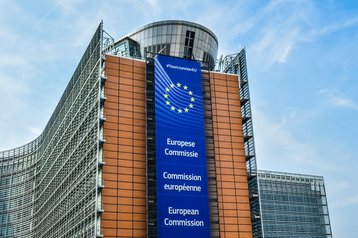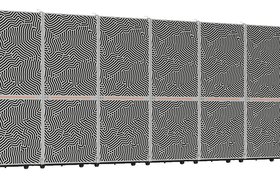Europe's data center operators have told the European Commission that they will cut water use to a maximum of 400ml per kWh of computer power by 2040.
The proposal was put to the Commission by the Climate Neutral Data Centre Pact (CNDCP), a group of operators which includes 90 percent of the European data center sector. The CNDCP plans to voluntarily beat the EU's overall goal of climate neutrality by 2050, without the need for regulations imposed by the Commission.
The CNDCP was formed in 2021 in response to the European Union's decision to be a climate-neutral continent. All industries will be expected to work toward this goal, and the data center sector decided to set its own, more ambitious targets. The Pact promised Europe's data center industry would be carbon neutral by 2030 and eliminate other environmental impacts such as water and waste before the EU's target date.
Water has typically been looked at later than energy use, and many sites use water cooling, and evaporative cooling techniques, which reduce energy used directly at the site, but can increase water used there.
"With water stress high and increasing in many areas, it is vital that the data center industry acts to mitigate its use of water," says the CNDCP's announcement.
The group meets every six months with the EU's Directorate Generals for technology and the environment (DG CNECT and DG ENV). At the third progress meeting, CNDCP proposed metrics on water use, including a limit on the water consumption of data centers.
The group's proposals are based on WUE (water usage effectiveness), a basic idea that goes back some 12 years, and measures the amount of water used per kWh of IT power at the site.
The CNDCP says all 74 data center operators signed up to the Pact will reach a limit of 0.4l/kWh (or 400ml per kWh) by 2040.
"The proposed limit of 0.4l/kWh takes into account the diverse range of technologies, climates, and types of data center building to ensure that the metric is technology and location neutral," says the announcement.
The timescale of 2040 takes into account the lifecycle of existing cooling systems. Replacing existing cooling systems wholesale before their end of life could do more harm than good, because of the embodied carbon cost. No new data centers will be built in Europe with water towers that fail to meet the limit, says the CNDCP.
The CNDCP target looks ambitious, as a 2016 study by Lawrence Berkeley National Laboratory found that the average WUE in US data centers was 1.8 liters per kWh of total data center site energy use. It's possible there may be differences in the metrics used, however.
More standards work
Alongside the water use proposal, the CNDCP has proposed some other metrics detailed in a promised white paper.
The group also made some other promises at its meeting, including ensuring its own metrics are in line with standards by mapping them to the ISO/IEC 30134 standard for data center performance. This mapping task will be done by independent auditing company Bureau Veritas.
Beyond water use, the CNDCP is getting ready to dig into the even more tricky issue of recycling and the circular economy. It has two working groups who plan to have ideas to share at the Pact's next meeting with the Commission in November 2022. Following the meeting, the Pact has established two new Working Groups to define targets for recycling and reuse as part of a circular economy, and to establish metrics for energy efficiency. These have already commenced work and will report progress at the next update meeting with the Commission planned for November 2022.
“This was the third of our bi-annual update meetings with the commission and we feel we are really hitting our stride," said Pact chairperson, Matt Pullen, MD Europe for CyrusOne. "With over 90 percent of Europe’s data center capacity represented by signatories to the Pact these meetings are milestones on a crucial journey for Europe’s Green Deal and Digital Agenda.”







